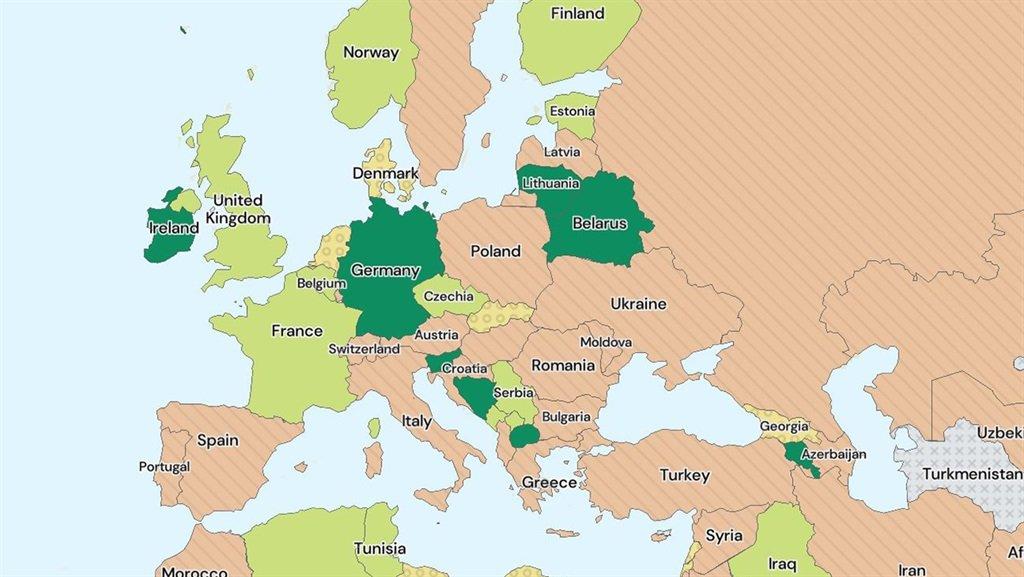Africa-Press – Eswatini. The European Union’s “emergency brake” mechanism, imposed on travellers from South Africa and neighbouring countries in late November, has been lifted.
Some countries, like Estonia, Finland, France, Germany, Czech Republic, Ireland, and Lithuania have already heeded the EU’s call.
Others are allowing travellers in but with strict conditions, like mandatory quarantine even if fully vaccinated.
But most EU member states are still off limits to ordinary South African travellers who don’t qualify for an exemption.
The European Union (EU) recently announced that all 27 member states had agreed to end the travel ban imposed on South Africa and neighbouring countries. But borders aren’t reopening just yet.
Travel to and from South Africa was dealt a death blow in late November. Immediately following the discovery of the Omicron coronavirus variant by South Africa’s Network for Genomic Surveillance, air travel ground to a halt and countries shut their borders.
International flights to South Africa dropped by 85% and by mid-December around 90 countries had imposed harsh restrictions on travellers from countries in southern Africa, according to the International Air Transport Association (IATA).
An EU integrated political crisis response (IPCR) meeting just 48 hours after the Omicron discovery activated the “emergency brake” and imposed restrictions on all travel into the region from Botswana, Eswatini, Lesotho, Mozambique, Namibia, South Africa, and Zimbabwe.
The “emergency brake” mechanism is used when the “epidemiological situation of a third country or region worsens quickly, in particular if a variant of concern or of interest has been detected.” Despite clear evidence of community transmission of Omicron throughout Europe before Christmas, most countries refused to lift their controversial travel bans, despite the EU calling for a reopening.
Some EU member states, like France, Germany, and Ireland, did heed the call and reopened to travellers from South Africa. Others, like the Netherlands, agreed to resume flights to and from South Africa, while still maintaining quarantine measures.
France, which holds the rotating EU presidency, confirmed on Monday that member states had agreed “to lift the emergency break” and “allow air travel to resume with southern African countries.”
But this doesn’t necessarily mean that all EU member states, despite agreeing in principle to ending the “emergency break” mechanism, have opened to travellers from South Africa.
“The Council recommendation is not a legally binding instrument. The authorities of the member states remain responsible for implementing its content,” the EU noted. The lifting and imposing of restrictions are ultimately decided by individual countries.
Only a third of countries belonging to the EU have reopened to South African travellers, according to Sherpa, which tracks global travel restrictions in real-time. Skyscanner, which uses data provided by IATA, reports similar findings.
EU countries which have reopened to South African travellers – in almost all cases allowing fully vaccinated visitors to avoid quarantine with a negative Covid-19 test result – include Estonia, Finland, France, Germany, Czech Republic, Ireland, and Lithuania.
Other countries like Spain, Slovakia, the Netherlands, Belgium, and Denmark are only accepting travellers under very specific conditions, including exemptions for critical workers and mandatory quarantine even if fully vaccinated.
Most EU countries – 15 out of the 27 member states – are still off-limits to South African travellers, although the recent recommendation to drop the “emergency brake” is intended to nudge these countries in the right direction over the coming days and weeks.
For More News And Analysis About Eswatini Follow Africa-Press







